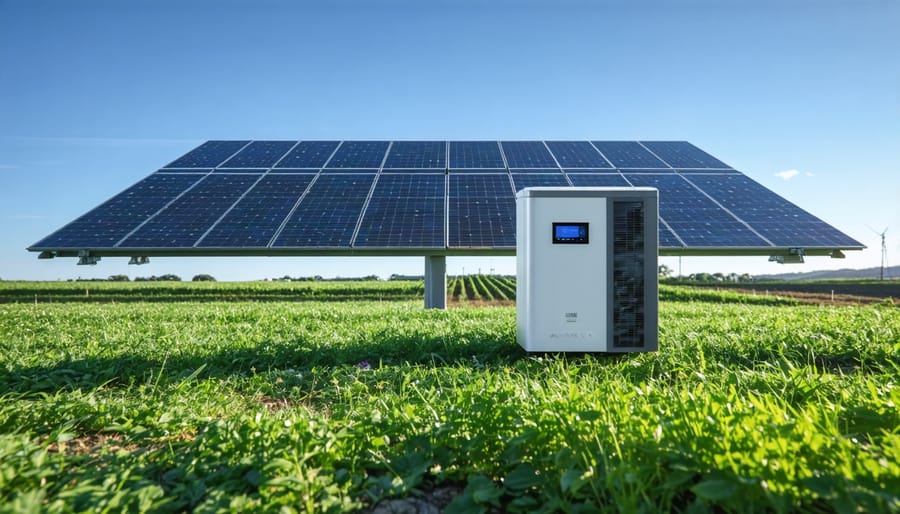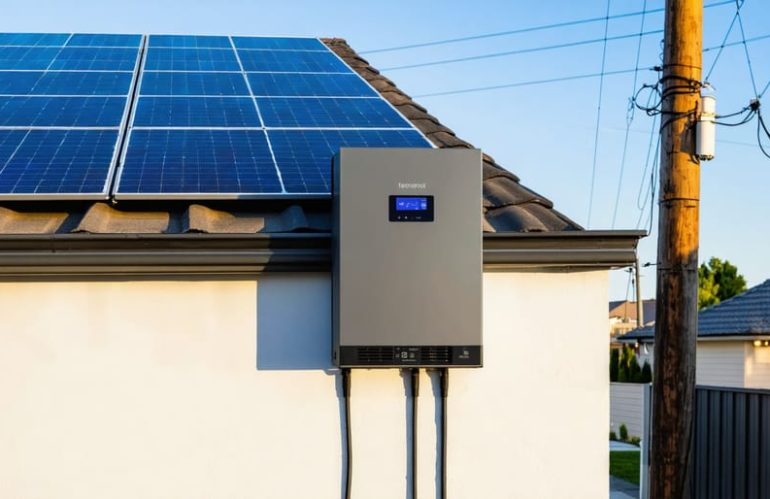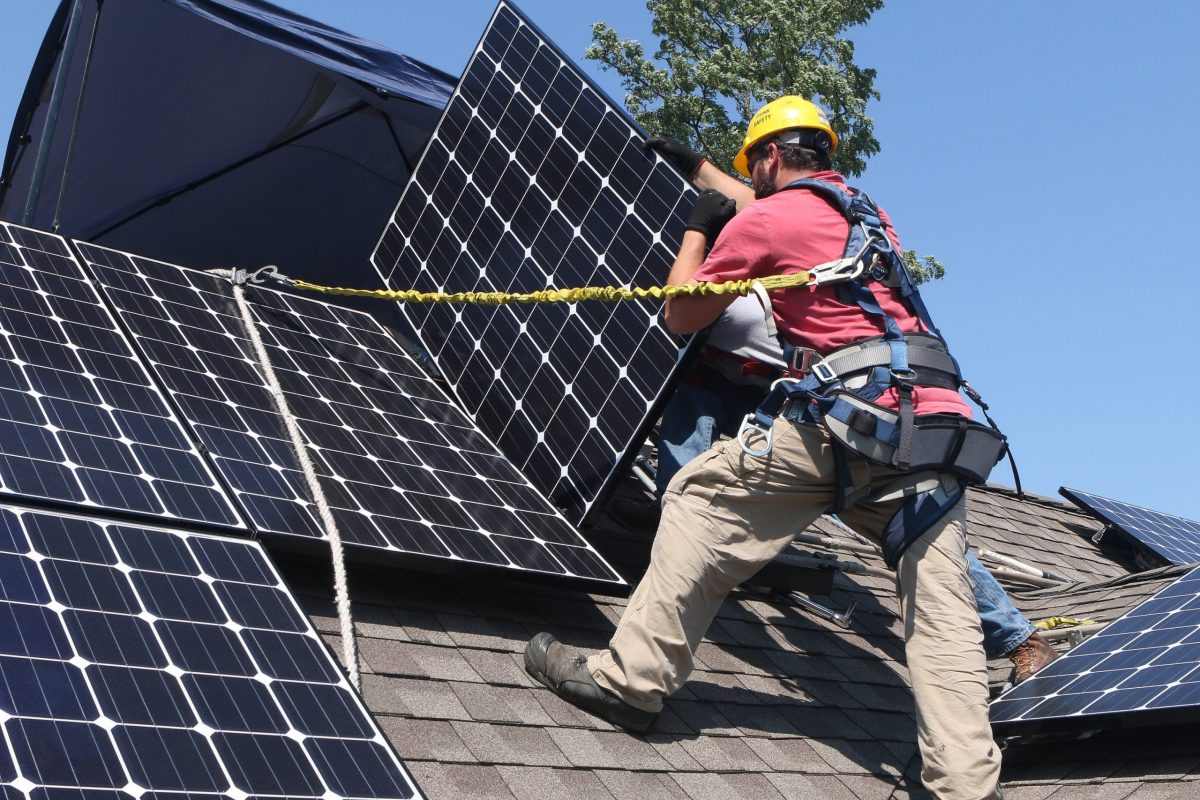Your solar panels generate electricity as direct current (DC), but your home runs on alternating current (AC)—and the device bridging that gap, your inverter, has become the unsung hero of modern energy resilience. Inverter-based resources (IBRs) are simply solar systems, battery storage, and other technologies that convert power through inverters rather than spinning turbines like traditional power plants.
This technical shift matters to your wallet and your lights staying on. As utilities modernize the grid to accommodate more renewable energy, they’re updating requirements for how solar systems connect and communicate. Your inverter determines whether your system can ride through grid disturbances, support your neighborhood during outages (when paired with batteries), and comply with evolving utility standards—or whether it becomes outdated within years of installation.
The confusion around IBRs stems from genuine complexity: grid operators are still learning to manage thousands of small solar systems instead of a few large power plants. But for homeowners, the practical implications are straightforward. Modern inverters with advanced grid support features protect your investment by ensuring compatibility with future utility requirements, enhance reliability during grid fluctuations, and unlock capabilities like backup power and energy independence.
Understanding what makes an inverter “grid-friendly” empowers you to ask the right questions before signing contracts, avoid systems that may require costly upgrades, and maximize both the financial returns and resilience benefits that drew you to solar in the first place.
What Are Inverter-Based Resources (And Why They Matter for Your Home)

The Simple Role Your Inverter Plays
At the heart of every solar installation sits a device most homeowners never think about—until they understand what it actually does. Your inverter’s primary job is straightforward: it converts the direct current (DC) electricity your solar panels generate into alternating current (AC) electricity that powers everything in your home, from your refrigerator to your phone charger.
But here’s where it gets interesting: modern inverters are far more sophisticated than simple converters. Think of them as the “brain” of your high-performance solar system. Today’s smart inverters actively monitor your system’s performance, optimize energy production throughout the day, and can even communicate with the grid to provide stability services. They track how much energy you’re producing and using in real-time, adjusting operations to maximize your savings.
These smart capabilities mean your inverter isn’t just converting power—it’s constantly working to ensure you get the most value from every ray of sunshine hitting your roof. This intelligence is what makes modern solar systems adaptable, efficient, and ready for whatever changes come to the electrical grid.
Why Power Companies Are Changing the Rules
The rules around home solar are evolving because the grid itself is changing. A decade ago, rooftop solar systems were rare enough that utilities could treat them as simple add-ons. Today, millions of homes generate their own electricity, fundamentally shifting how power flows through neighborhoods.
This rapid growth creates a new challenge: stability. Traditional power plants don’t just generate electricity—they also provide essential grid support services like voltage regulation and frequency control. As more homeowners install solar, these traditional plants run less often, which means the grid loses some of its built-in stability mechanisms.
Here’s the good news: your solar inverter can fill that gap. Modern inverters aren’t just one-way converters anymore—they’re sophisticated devices capable of supporting the grid during disruptions, managing voltage fluctuations, and even helping prevent blackouts. Power companies recognize this potential, which is why they’re updating requirements to ensure new solar systems contribute to grid health rather than just draw from it. For you, this means investing in a system that’s not only compatible with today’s grid but built for tomorrow’s energy landscape.
How Modern Inverters Protect Your Home During Grid Problems

Ride-Through Capability: Staying Online When Others Go Dark
Older solar inverters had a hair-trigger response to grid problems—the moment voltage dipped or fluctuated even slightly, they’d shut down completely. While this protected the equipment, it meant your solar panels stopped producing power during brief disturbances that often resolved in seconds.
Modern inverters with ride-through capability are much smarter. They can detect the difference between a minor voltage sag (like when your neighbor’s air conditioner kicks on) and a genuine safety hazard. Instead of immediately disconnecting, these advanced inverters adjust their operation and keep your system running through temporary disturbances.
This means your panels continue generating electricity and your battery charging proceeds uninterrupted during most grid hiccups. You’re getting more usable energy from your investment rather than watching your system repeatedly shut down and restart.
Think of it like cruise control that adapts to hills versus one that disengages every time the road isn’t perfectly flat. Ride-through capability provides stability and maximizes your energy independence. When shopping for solar equipment, look for inverters certified to IEEE 1547-2018 standards—this newer specification requires ride-through features, ensuring your system stays productive when older installations go dark.
Voltage Support That Protects Your Investment
Think of your smart inverter as a built-in voltage guardian that works around the clock to protect your solar investment. When grid voltage fluctuates—whether from storms, equipment issues, or high demand—your inverter automatically adjusts its output to help stabilize conditions. This intelligent response does two important things for you.
First, it protects your home electronics and appliances from potentially damaging voltage swings. Rather than simply disconnecting when the grid becomes unstable, modern inverters can “ride through” many disturbances while keeping your system generating clean energy and savings.
Second, this voltage support capability enhances your overall system resilience. You’re not just passively connected to the grid—your system actively contributes to grid stability, which means fewer disruptions for everyone in your neighborhood. Many utilities now require these smart capabilities, but that’s actually good news: it means your system is future-proofed and ready to handle whatever grid conditions come your way.
The best part? All this protection happens automatically in the background. You’ll continue enjoying reduced energy bills while your inverter quietly manages voltage challenges, maximizing both your equipment lifespan and your return on investment.
The Adaptation Features That Future-Proof Your Solar Investment
Software Updates Keep You Compliant
Just like your smartphone gets regular software updates to add new features and fix bugs, quality inverters can receive firmware updates that keep your solar system compliant with evolving grid requirements. This is fantastic news for your wallet because you won’t need expensive hardware replacements when utilities change their grid codes or safety standards.
Think of it as future-proofing your investment. When your utility company updates their requirements for how solar systems connect to the grid—which happens more frequently than you might expect—a quality inverter manufacturer can push out a software update remotely or through your installer. This simple update ensures your system continues operating legally and efficiently without the headache and cost of replacing physical equipment.
This adaptability is one of the biggest hidden benefits of choosing reputable inverter brands. Lower-cost options often lack this update capability, meaning you could face costly hardware replacements down the road. By investing in quality inverter-based resources upfront, you’re essentially buying peace of mind that your system will adapt to changing regulations, protecting both your investment and your energy independence for decades to come.
Grid Service Features That Could Pay You Back
Your smart inverter isn’t just a one-way street—it can actually help stabilize the entire electric grid while potentially putting money back in your pocket. Utilities across the country are launching programs that compensate homeowners whose inverters provide grid services like voltage support and frequency regulation. Think of it as your solar system having a side hustle.
When your inverter helps balance grid voltage or responds to utility signals during peak demand, you’re solving real problems that utilities would otherwise address with expensive infrastructure upgrades. Some pilot programs are already paying participants $100-$300 annually, and as these initiatives expand, compensation could increase significantly. Hawaii, California, and Vermont have been pioneers, but more states are rolling out similar opportunities.
The best part? Your inverter does this work automatically once enrolled—no extra effort required. While not every utility offers compensation yet, asking your installer about grid service capabilities ensures your system is ready when programs launch in your area. It’s future-proofing that could literally pay dividends.

What This Means When You’re Shopping for Solar
The Key Inverter Certifications You Need
When shopping for an inverter-based system, look for equipment that meets **IEEE 1547-2018 standards**—this certification ensures your inverter can communicate safely with the modern grid and won’t be forced offline during minor voltage fluctuations. Think of it as future-proofing your investment. **UL 1741** certification guarantees your equipment meets fundamental safety requirements, protecting both your home and utility workers. For batteries, **UL 9540** certification confirms fire safety standards have been met—essential peace of mind for equipment installed in your home. California homeowners should verify **Rule 21** compliance, which allows your system to support the grid during peak demand times, potentially unlocking future incentive programs. These certifications aren’t just bureaucratic checkboxes; they’re your assurance that equipment will work reliably for decades and remain compatible as utilities upgrade their infrastructure.
Questions to Ask Your Solar Installer
Before signing any solar contract, arm yourself with these essential questions to ensure your system will serve you well for decades:
**Can this inverter receive remote software updates?** Modern inverters should be updatable without a technician visit, keeping your system current with evolving grid requirements.
**What grid support features does this inverter include?** Ask specifically about voltage regulation and frequency response capabilities—these features help your system work smoothly with the grid during disruptions.
**Will this system meet future grid standards?** Request documentation showing compliance with IEEE 1547-2018 or your utility’s interconnection requirements. This protects your investment from becoming outdated.
**What’s your warranty coverage for software updates?** Clarify whether firmware updates are included throughout your warranty period, typically 10-25 years.
**Can you provide examples of how this inverter has performed during grid events?** Reputable installers should offer real-world performance data or customer testimonials about system resilience during outages or voltage fluctuations.
Getting clear answers upfront prevents costly surprises and ensures your solar investment truly future-proofs your home.
Debunking Common Myths About Advanced Inverters
Let’s clear up some widespread confusion about modern solar inverters. You might have heard that “all inverters basically do the same job” – but that’s like saying all cars just get you from point A to B. Today’s advanced inverters include smart features that help stabilize your local grid, protect your equipment during outages, and potentially save you money through time-of-use rate optimization. Older models simply converted DC power to AC without these capabilities.
Another common myth? “These new requirements are just utilities creating red tape.” Actually, updated inverter standards emerged because millions of solar systems connecting to aging grids created unforeseen challenges. Advanced inverters solve real problems – they help prevent voltage fluctuations in your neighborhood and support grid recovery after disruptions. Think of it as upgrading from a flip phone to a smartphone; yes, there are more features, but they exist for good reasons.
Perhaps the biggest misconception: “Advanced features don’t matter for residential systems.” The truth? These capabilities directly affect your investment’s longevity and performance. Advanced inverters can ride through minor grid disturbances without shutting down (meaning you generate more power), communicate problems before they become expensive failures, and adapt as utility requirements evolve. Choosing a basic inverter today might mean costly replacements tomorrow when standards change. Your home deserves equipment that protects your investment and keeps pace with our modernizing electric grid.
The quality of your inverter isn’t just about today’s performance—it’s about protecting your investment for decades to come. A high-quality, advanced inverter directly determines how well your solar system handles grid changes, extreme weather, and evolving energy demands. Choosing modern inverter-based resources now means you’re building resilience into your home while avoiding the costly headache of premature replacements or compatibility issues down the road.
Think of it this way: spending a bit more on a capable inverter today can save you thousands in upgrade costs tomorrow, all while maximizing your energy bill savings and environmental impact. As grid technology evolves and utilities implement new requirements, systems with outdated inverters may face expensive retrofits or reduced functionality. Your inverter is the brain of your solar setup—giving it the intelligence to adapt pays dividends in both dollars and peace of mind.
Before signing any solar contract, take the time to ask your installer specific questions about the inverter they’re proposing. Request documentation on its features, certifications, and grid support capabilities. Verify it meets current standards and has a proven track record. This simple step ensures you’re getting a system that won’t just work today, but will thrive for twenty-plus years ahead.









